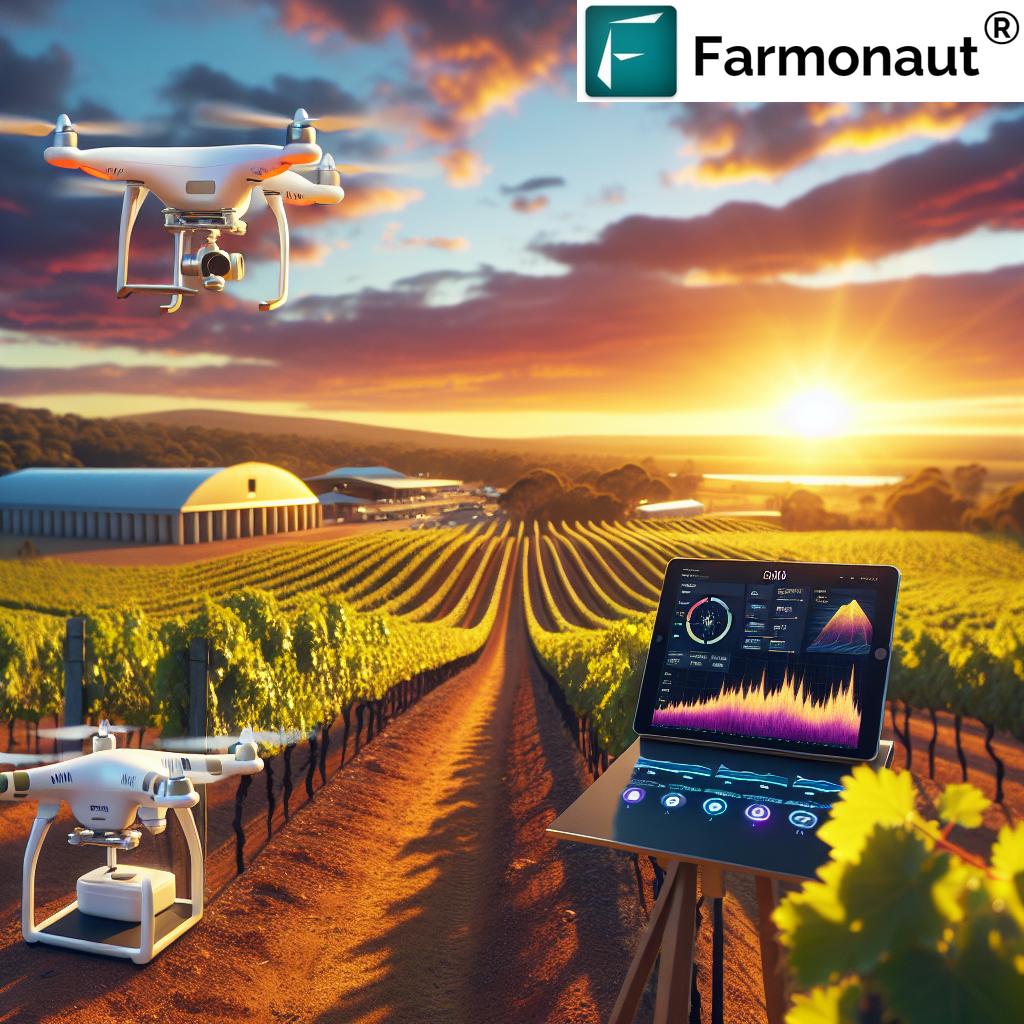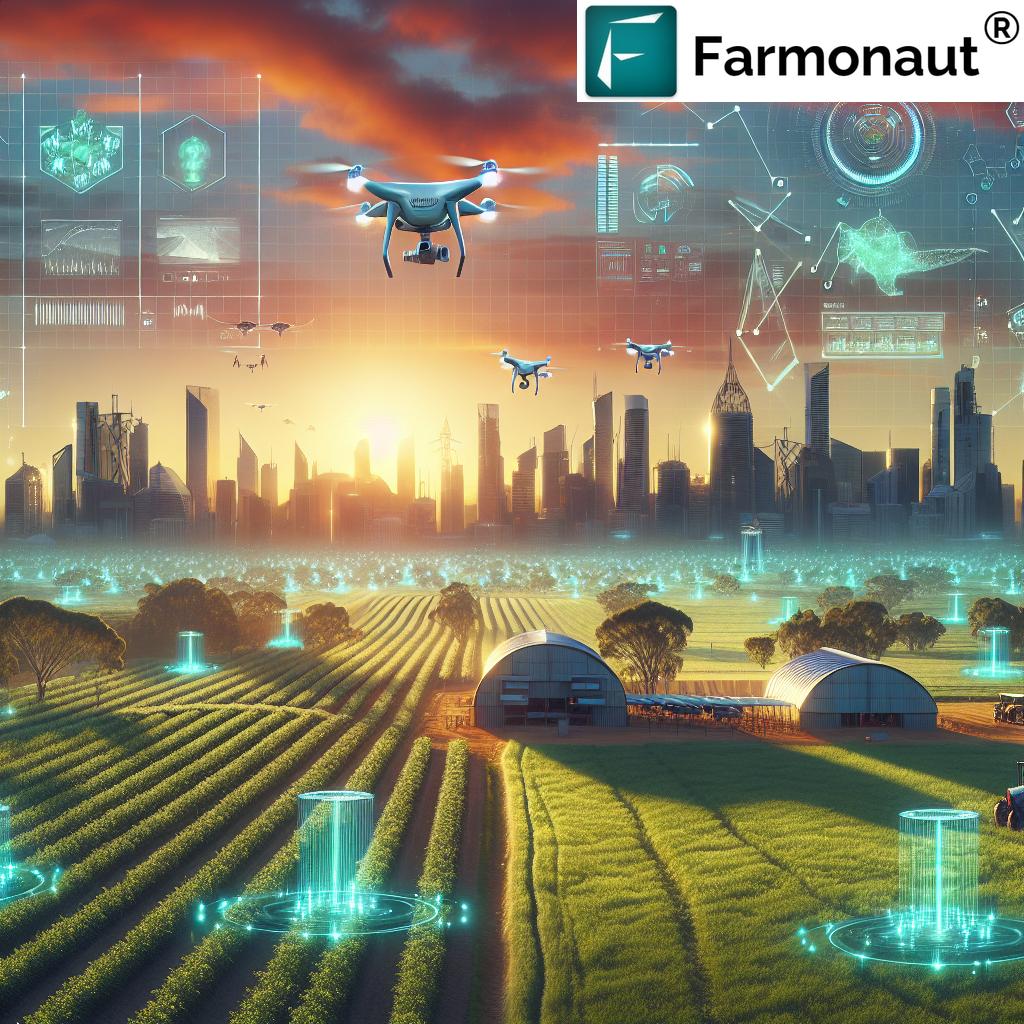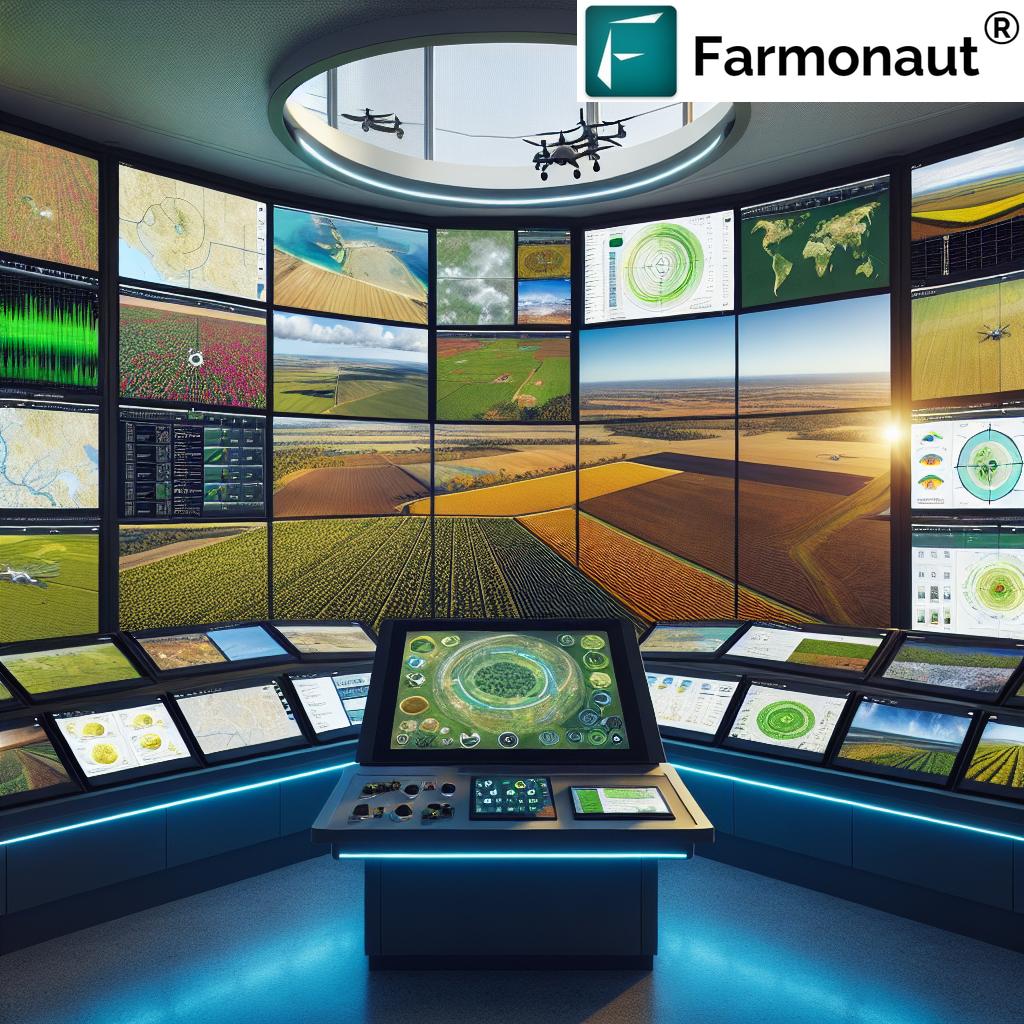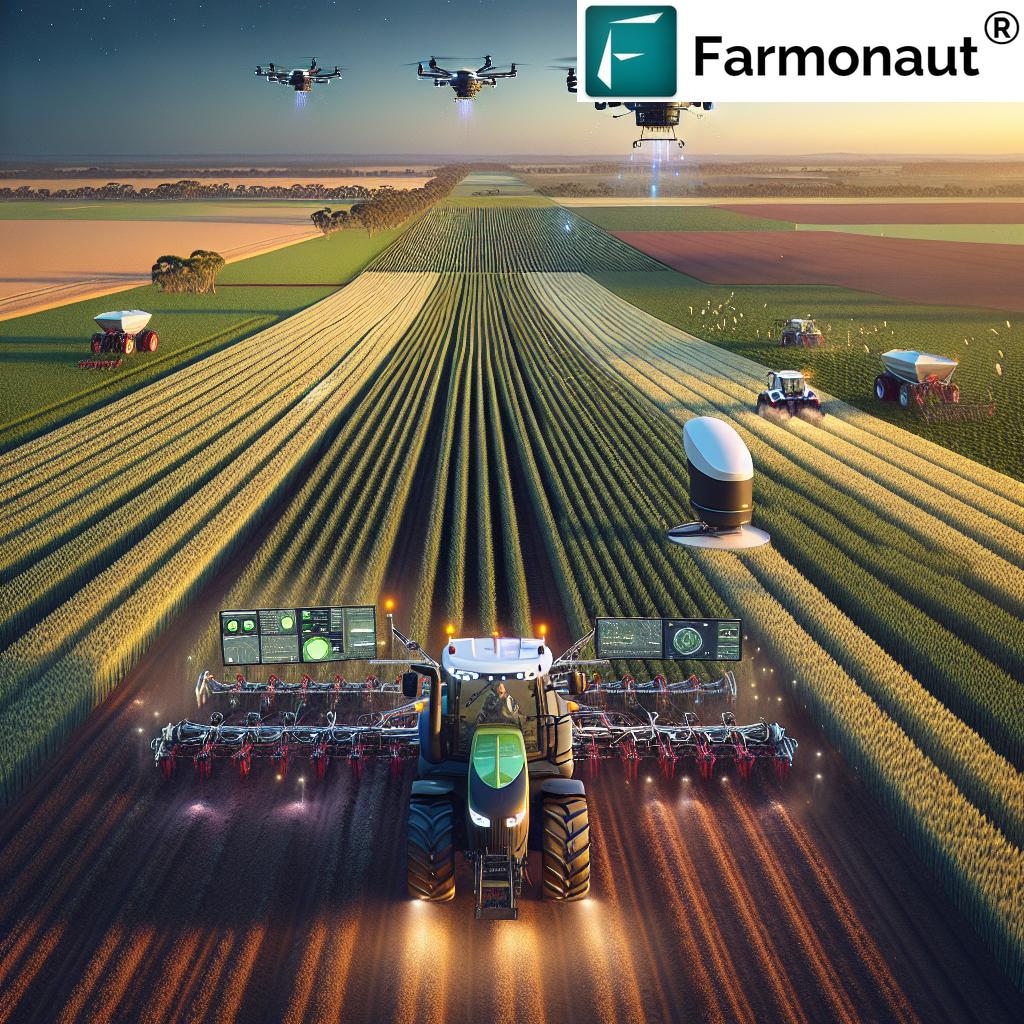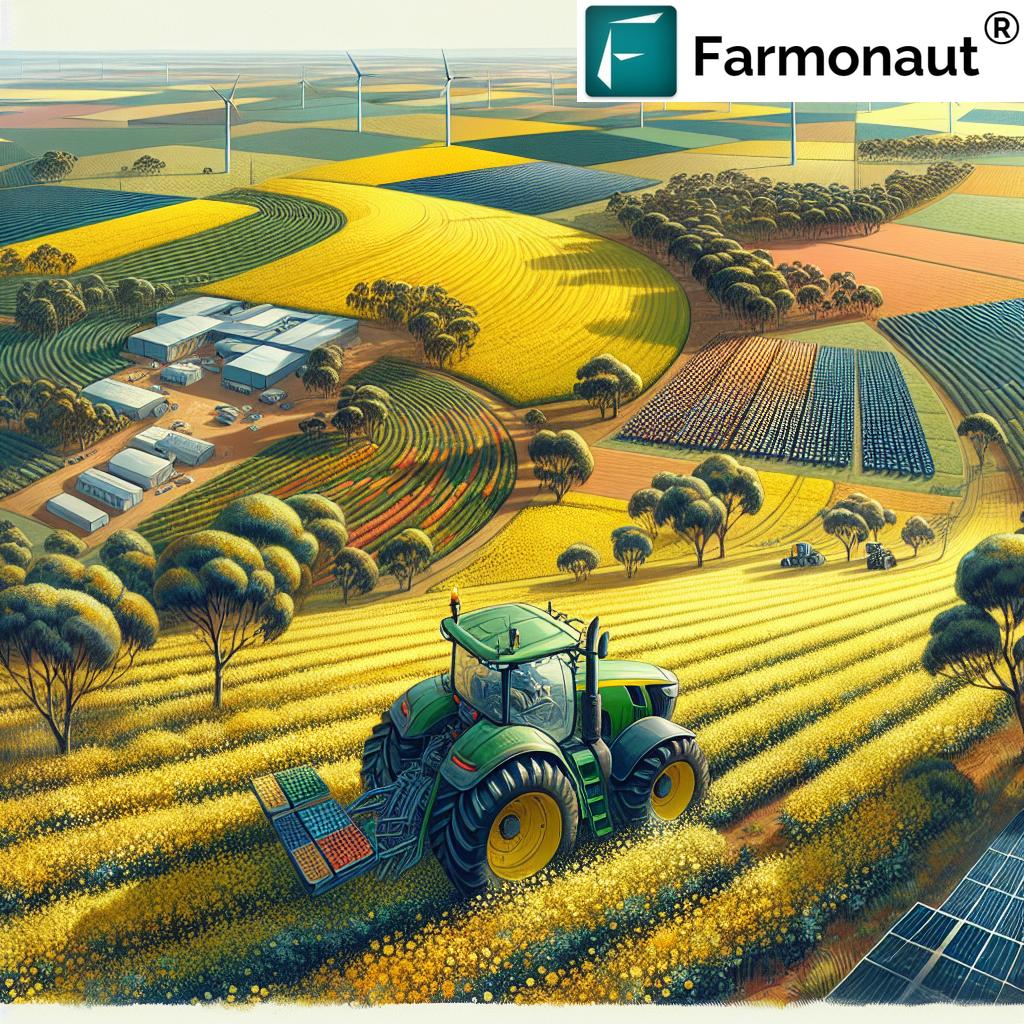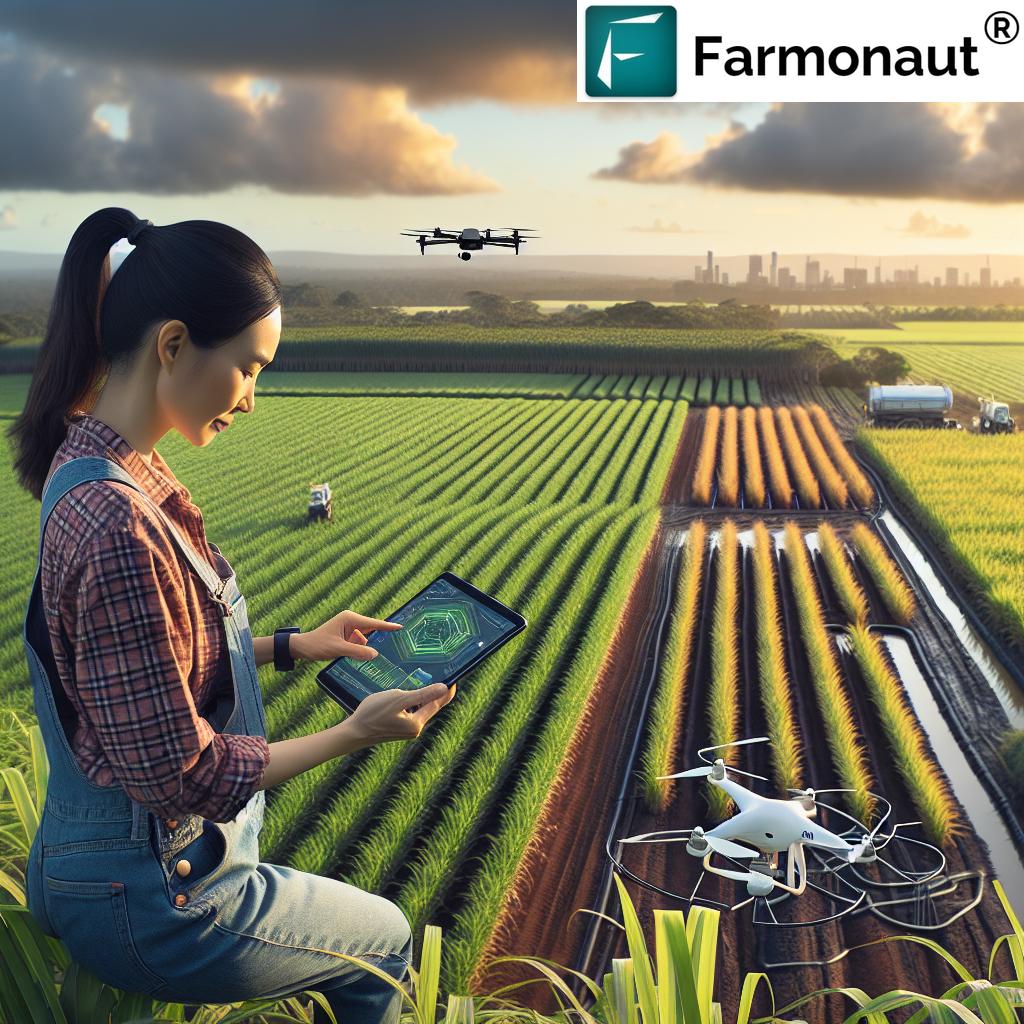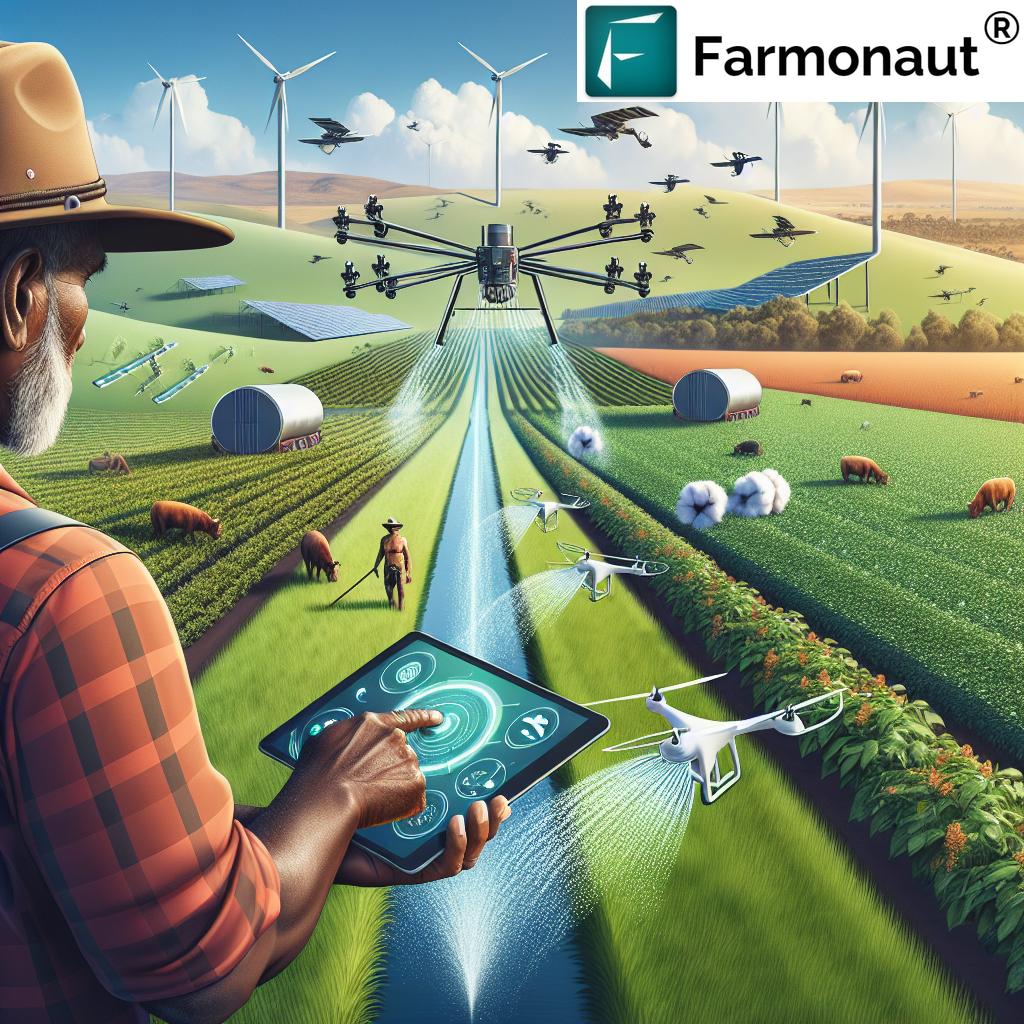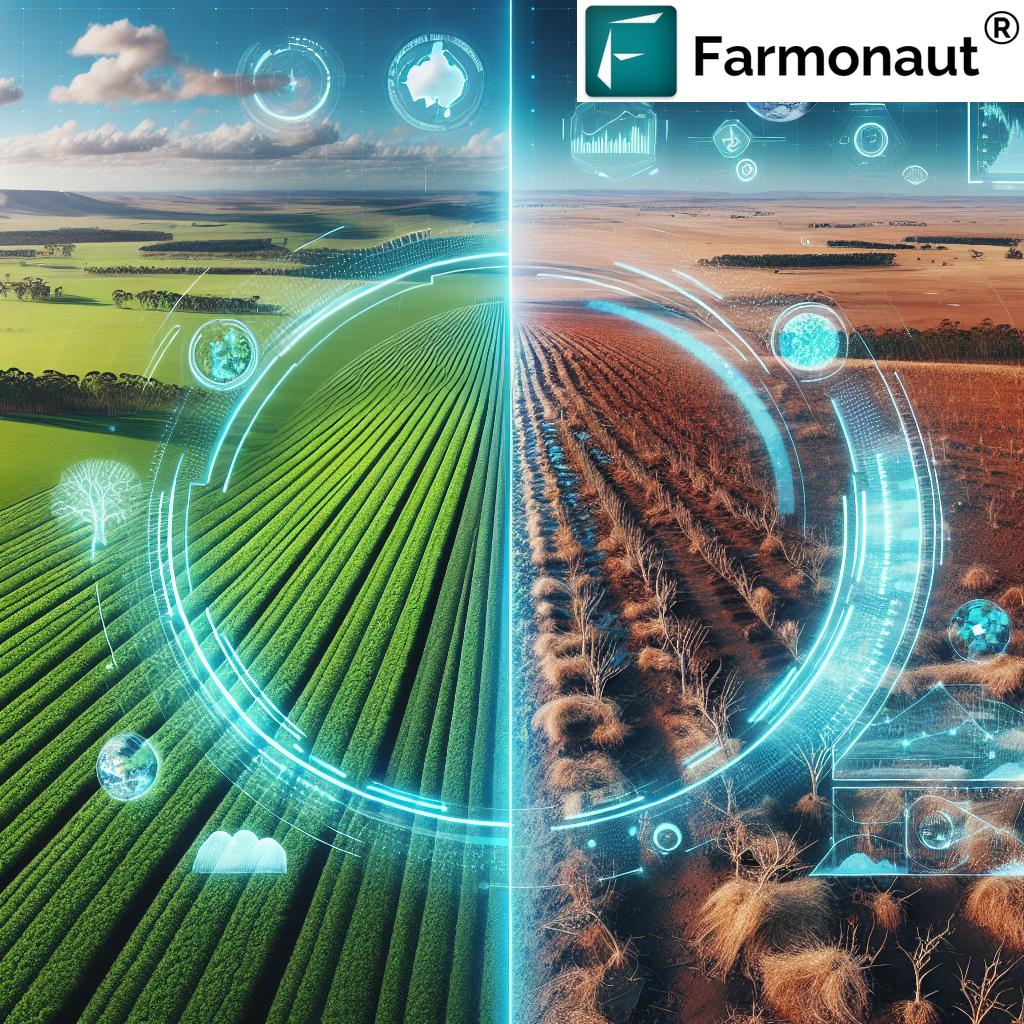Sustainable Agriculture in Australia: Precision Farming Technologies for Water Conservation and Crop Management
“Australian farmers using precision farming technologies have reduced water usage by up to 30% in drought-prone regions.”
In the vast expanses of rural Australia, a quiet revolution is taking place. Sustainable agriculture practices and precision farming technologies are transforming the way we cultivate crops, manage livestock, and conserve our precious water resources. As we navigate the challenges of a changing climate and increasing demand for food production, innovative solutions are emerging to help farmers optimize their operations while minimizing environmental impact.
In this comprehensive guide, we’ll explore the cutting-edge techniques and technologies that are shaping the future of Australian agriculture. From smart irrigation systems in the Murrumbidgee region to advanced crop management strategies in the Lachlan Valley, we’ll delve into the practices that are making a real difference on farms across the country.
The Need for Sustainable Agriculture in Australia
Australia’s agricultural sector faces unique challenges. With its vast landmass and diverse climate zones, from the tropical north to the temperate south, our farmers must adapt to a wide range of conditions. Water scarcity, in particular, is a pressing issue in many regions, making efficient water management crucial for sustainable farming.
- Increasing demand for food production
- Climate change impacts on weather patterns and water availability
- Need for more efficient resource utilization
- Importance of maintaining soil health and biodiversity
To address these challenges, farmers across Australia are turning to precision farming technologies and sustainable agriculture practices. These innovative approaches not only help conserve water but also improve crop yields, reduce input costs, and minimize environmental impact.
Precision Farming Technologies for Water Conservation
Water is the lifeblood of Australian agriculture, and its efficient use is paramount to sustainable farming practices. Let’s explore some of the cutting-edge technologies that are revolutionizing water conservation in agriculture:
Smart Irrigation Systems
Smart irrigation systems are at the forefront of water conservation efforts in Australian agriculture. These advanced systems use a combination of sensors, weather data, and AI algorithms to optimize irrigation schedules and water usage.
- Soil moisture sensors provide real-time data on water levels
- Weather forecasts are integrated to adjust irrigation plans
- AI algorithms analyze data to determine optimal watering schedules
- Remote monitoring and control via smartphone apps
In the Murrumbidgee Irrigation Area, farmers using smart irrigation systems have reported water savings of up to 25% while maintaining or even improving crop yields.
Satellite-Based Crop Monitoring
Satellite technology is playing an increasingly important role in precision agriculture. Platforms like Farmonaut use satellite imagery to provide farmers with valuable insights into crop health, soil moisture levels, and overall field conditions.
- Regular satellite imagery captures field conditions
- Vegetation indices like NDVI help assess crop health
- AI algorithms detect potential issues early
- Farmers can make data-driven decisions on irrigation and crop management
By leveraging satellite data, farmers can identify areas of their fields that require more or less water, enabling precise and efficient irrigation strategies.
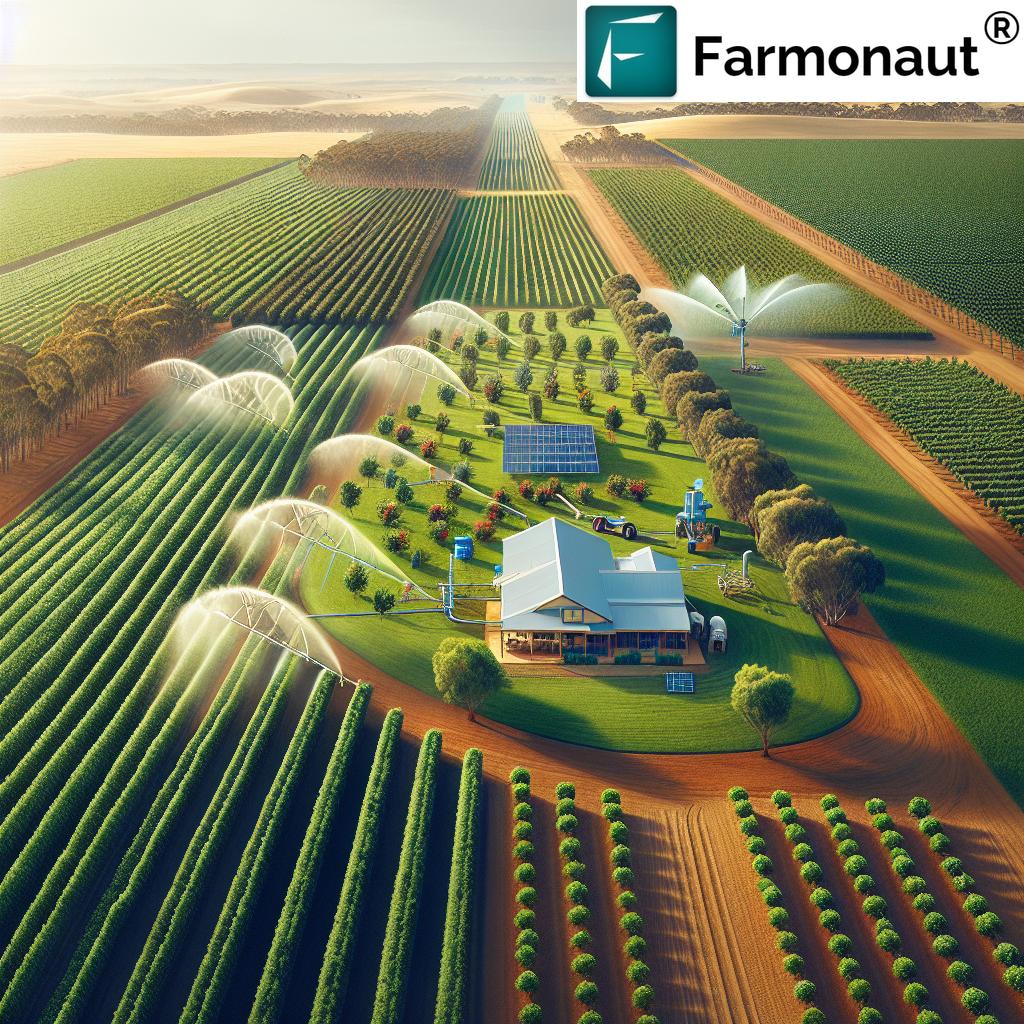
Drone Technology for Precision Agriculture
Drones equipped with multispectral cameras are becoming increasingly popular among Australian farmers for monitoring crop health and water stress. These aerial devices provide high-resolution imagery that complements satellite data, offering a more detailed view of field conditions.
- Multispectral imaging detects plant stress before visible signs appear
- Thermal cameras identify variations in crop temperature, indicating water stress
- Precise mapping of field topography for improved water management
- Ability to scout large areas quickly and efficiently
Farmers in the Lachlan region have reported significant improvements in water use efficiency after incorporating drone technology into their precision agriculture practices.
Innovative Crop Management Techniques
Effective crop management is essential for maximizing yields while minimizing resource use. Let’s explore some of the innovative techniques being employed across Australian farms:
Variable Rate Technology (VRT)
Variable Rate Technology allows farmers to apply inputs such as water, fertilizer, and pesticides at varying rates across their fields, based on the specific needs of different areas.
- GPS-guided machinery ensures precise application
- Soil testing and yield mapping inform VRT strategies
- Reduced input waste and improved crop uniformity
- Particularly effective for broadacre cropping in regions like Victoria
By using VRT, farmers can optimize resource use, reduce costs, and minimize environmental impact while improving overall crop quality and yield.
Crop Rotation and Cover Cropping
Sustainable agriculture practices often involve strategic crop rotation and the use of cover crops to improve soil health, reduce erosion, and manage pests naturally.
- Rotating crops breaks pest and disease cycles
- Cover crops protect soil during fallow periods
- Improved soil structure and water retention
- Reduced reliance on chemical inputs
These practices are particularly beneficial in regions with variable rainfall, such as parts of South Australia, where soil conservation is crucial for long-term agricultural sustainability.
Precision Seeding and Planting
Advanced seeding and planting technologies allow for precise placement of seeds, optimizing plant spacing and depth for improved germination and growth.
- GPS-guided planters ensure accurate seed placement
- Variable rate seeding adapts to soil conditions
- Improved plant stand and uniformity
- Reduced seed waste and better resource utilization
Farmers in the grain-growing regions of Australia have reported significant improvements in crop establishment and early growth stages when using precision seeding techniques.
Livestock Management Solutions
Sustainable agriculture extends beyond crop production to include innovative approaches to livestock management. Let’s explore some of the technologies and practices being adopted across Australian farms:
Precision Livestock Farming
Precision livestock farming uses advanced technologies to monitor and manage individual animals within a herd, improving welfare and productivity.
- RFID tags for individual animal identification
- Automated weight monitoring and feed management
- Health tracking through wearable sensors
- Data-driven breeding and culling decisions
These technologies are particularly beneficial for sheep and cattle farmers in regions like Victoria and New South Wales, where large-scale operations require efficient management systems.
Rotational Grazing Systems
Rotational grazing is a sustainable practice that involves moving livestock through different pasture areas to optimize grass growth and prevent overgrazing.
- Improved pasture quality and soil health
- Reduced erosion and increased carbon sequestration
- Better distribution of manure for natural fertilization
- Increased stocking rates and overall farm productivity
Dairy farmers in regions like Gippsland have reported significant improvements in pasture quality and milk production after implementing rotational grazing systems.
Water-Efficient Livestock Management
Water conservation is crucial in livestock farming, particularly in arid regions of Australia. Innovative approaches to water management can significantly reduce consumption while maintaining animal health and productivity.
- Automated water troughs with leak detection systems
- Rainwater harvesting and storage for livestock use
- Drought-resistant pasture species for grazing
- Shade structures to reduce water loss through evaporation
These water-efficient practices are particularly important for sheep and goat farmers in regions like South Australia, where water scarcity is a constant challenge.
“Sustainable agriculture practices have increased crop yields by 25% in some parts of rural Australia over the past decade.”
Agricultural Risk Assessment and Financial Planning
Sustainable agriculture is not just about adopting new technologies; it also involves careful risk assessment and financial planning. Let’s explore some key aspects of this critical area:
Climate Risk Assessment
With increasing climate variability, assessing and managing climate-related risks is crucial for Australian farmers. Tools and strategies for climate risk assessment include:
- Long-term weather forecasting and climate modeling
- Crop insurance tailored to climate-related risks
- Diversification of crops and income streams
- Investment in climate-resilient infrastructure
Farmers in regions like the Murrumbidgee are increasingly using climate risk assessment tools to inform their planting and investment decisions.
Farm Financial Planning
Effective financial planning is essential for the long-term sustainability of agricultural operations. Key aspects include:
- Budgeting and cash flow management
- Investment analysis for new technologies and equipment
- Succession planning for family farms
- Exploring alternative revenue streams (e.g., agritourism)
Many farmers are working with agricultural financial advisors to develop robust financial plans that account for the unique challenges and opportunities in Australian agriculture.
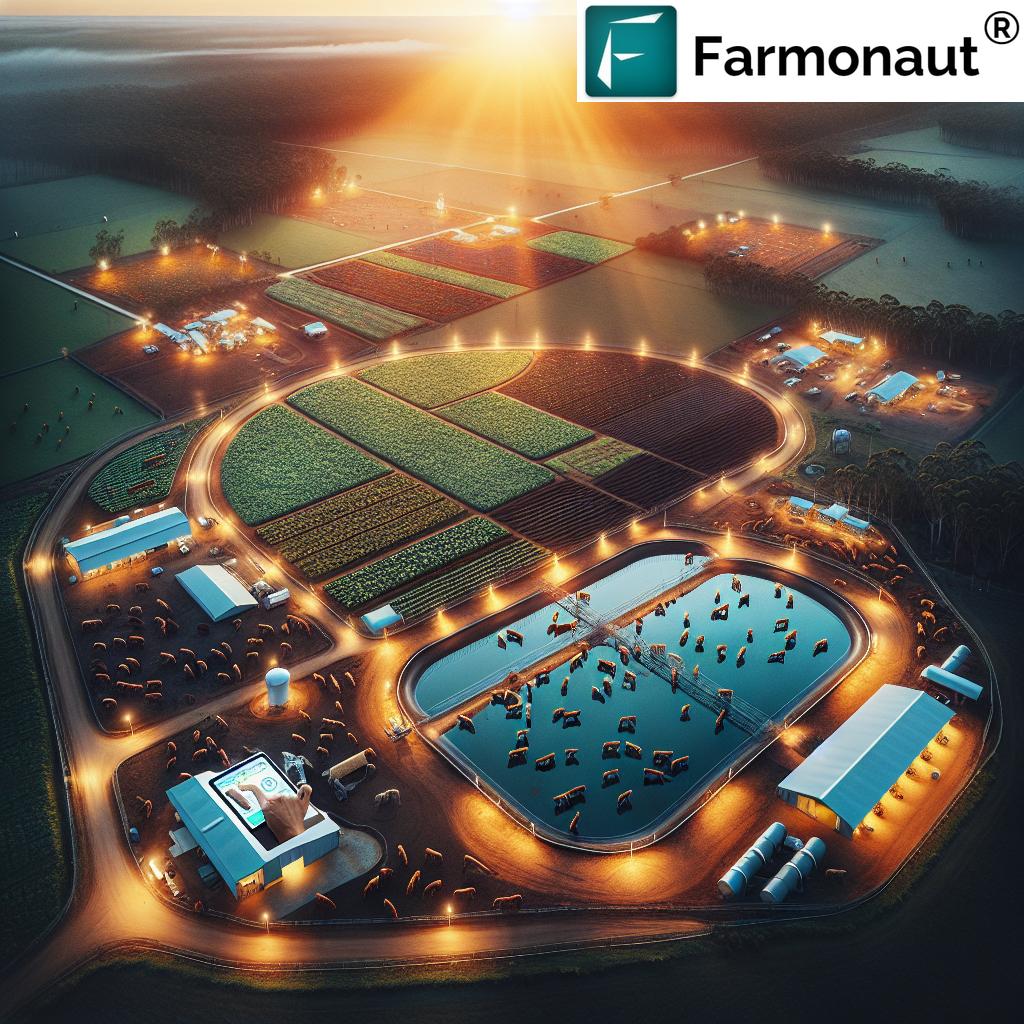
Agronomy Consulting Services
Professional agronomy services play a crucial role in helping farmers optimize their operations and manage risks. These services often include:
- Soil testing and nutrient management planning
- Integrated pest management strategies
- Crop variety selection and rotation planning
- Precision agriculture technology implementation
Agronomists working in regions like the Lachlan Valley are helping farmers adapt to changing conditions and implement sustainable practices that improve both productivity and profitability.
Innovations in Horticulture and Viticulture
The horticulture and viticulture sectors in Australia are also embracing sustainable practices and precision technologies. Let’s explore some of the innovations in these important agricultural areas:
Protected Cropping Systems
Protected cropping, including greenhouse and hydroponic systems, is gaining popularity in Australia’s horticulture sector. These systems offer several advantages:
- Year-round production capabilities
- Precise control over growing conditions
- Significant water savings through recirculation systems
- Reduced pest pressure and chemical use
Vegetable growers in regions like Victoria are increasingly adopting protected cropping systems to improve yields and manage climate-related risks.
Precision Viticulture
Australia’s wine industry is at the forefront of adopting precision technologies to improve grape quality and vineyard management:
- Hyperspectral imaging for assessing grape ripeness
- Automated pruning and harvesting systems
- Micro-irrigation and fertigation for precise nutrient delivery
- Climate-controlled storage for optimum wine aging
Vineyards in regions like South Australia are using these technologies to produce high-quality wines while improving resource efficiency.
The Role of Technology Platforms in Sustainable Agriculture
Technology platforms play a crucial role in enabling and supporting sustainable agriculture practices. One such platform making waves in the Australian agricultural sector is Farmonaut.
Farmonaut: Empowering Precision Agriculture
Farmonaut is a pioneering agricultural technology company that offers advanced, satellite-based farm management solutions. Their platform provides valuable services such as:
- Real-time crop health monitoring using satellite imagery
- AI-based advisory systems for personalized farm management
- Blockchain-based traceability for supply chain transparency
- Resource management tools for optimizing farm operations
Farmers across Australia can access Farmonaut’s services through their web application, Android app, and iOS app.
For developers and businesses looking to integrate Farmonaut’s technology into their own systems, the company offers an API with comprehensive developer documentation.
Benefits of Using Technology Platforms
Platforms like Farmonaut offer numerous benefits for Australian farmers:
- Improved decision-making through data-driven insights
- Early detection of crop health issues and pest infestations
- Optimized resource use, leading to cost savings and reduced environmental impact
- Enhanced traceability and compliance with sustainability standards
- Access to cutting-edge technologies at an affordable cost
By leveraging these technology platforms, Australian farmers can stay at the forefront of sustainable agriculture practices and precision farming technologies.
Comparison of Precision Farming Technologies
To help farmers make informed decisions about implementing precision farming technologies, we’ve compiled a comparison table of some key solutions:
| Technology | Primary Application | Water Savings Potential | Crop Yield Improvement | Initial Investment Cost | Suitable Farm Types | Regions Most Applicable |
|---|---|---|---|---|---|---|
| Smart Irrigation Systems | Irrigation | 20-30% | 10-15% | Medium | Broadacre, Horticulture | Murrumbidgee, Lachlan |
| Soil Moisture Sensors | Irrigation, Crop Monitoring | 15-25% | 5-10% | Low | All Types | All Regions |
| Drone-based Crop Monitoring | Crop Monitoring | 10-20% | 10-20% | Medium | Broadacre, Viticulture | South Australia, Victoria |
| Weather-resistant Crop Varieties | Crop Management | 5-15% | 15-25% | Low | All Types | All Regions |
| Precision Fertilizer Application | Crop Management | 5-10% | 10-20% | Medium | Broadacre, Horticulture | Victoria, New South Wales |
This comparison highlights the diverse range of precision farming technologies available to Australian farmers. Each solution offers unique benefits and is suited to different farm types and regions. Farmers should carefully consider their specific needs and circumstances when choosing which technologies to implement.
The Future of Sustainable Agriculture in Australia
As we look to the future, several trends are likely to shape the continued evolution of sustainable agriculture in Australia:
- Increased integration of AI and machine learning in farm management systems
- Development of drought-resistant and climate-adaptive crop varieties
- Expansion of vertical farming and urban agriculture initiatives
- Greater emphasis on regenerative agriculture practices
- Continued innovation in water-saving technologies and practices
By embracing these trends and continuing to innovate, Australian farmers can ensure the long-term sustainability and profitability of their operations while contributing to global food security and environmental conservation efforts.
Conclusion
Sustainable agriculture and precision farming technologies are transforming the landscape of Australian farming. From water conservation strategies in the Murrumbidgee to innovative crop management techniques in the Lachlan Valley, farmers across the country are embracing new approaches to improve productivity, reduce environmental impact, and ensure long-term sustainability.
By leveraging advanced technologies, implementing smart management practices, and staying informed about the latest innovations, Australian farmers can overcome the challenges of a changing climate and continue to produce high-quality food and fiber for domestic and international markets.
As we move forward, collaboration between farmers, researchers, technology providers, and policymakers will be crucial in driving further advancements in sustainable agriculture. Together, we can create a resilient and productive agricultural sector that benefits both people and the planet.
FAQ Section
Q: What is precision agriculture, and how does it benefit Australian farmers?
A: Precision agriculture involves using technology to optimize crop management and resource use. It benefits Australian farmers by improving yields, reducing input costs, and minimizing environmental impact through targeted application of water, fertilizers, and pesticides.
Q: How can satellite-based crop monitoring help in water conservation?
A: Satellite-based crop monitoring provides detailed information about crop health and soil moisture levels across entire fields. This allows farmers to identify areas that need more or less water, enabling precise irrigation and reducing overall water usage.
Q: Are sustainable agriculture practices economically viable for small-scale farmers?
A: Yes, many sustainable agriculture practices can be implemented at various scales. While some technologies may require initial investment, they often lead to cost savings and improved yields over time. Additionally, platforms like Farmonaut offer affordable solutions for farmers of all sizes.
Q: How does rotational grazing benefit livestock farmers in Australia?
A: Rotational grazing improves pasture quality, increases soil health, and can lead to higher stocking rates. It also helps distribute manure more evenly, reducing the need for artificial fertilizers and improving overall farm productivity.
Q: What role does government policy play in promoting sustainable agriculture in Australia?
A: Government policies can provide incentives for adopting sustainable practices, fund research and development in agricultural technologies, and support farmers in transitioning to more sustainable methods. Policies also help set standards for water use, land management, and environmental protection in the agricultural sector.
Ready to take your farming practices to the next level? Explore Farmonaut’s innovative solutions:
By embracing sustainable agriculture practices and leveraging cutting-edge technologies, Australian farmers can ensure a prosperous and environmentally responsible future for the agricultural sector. Together, we can build a more sustainable and resilient food system for generations to come.





